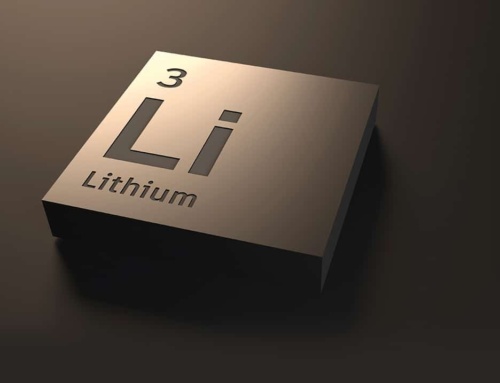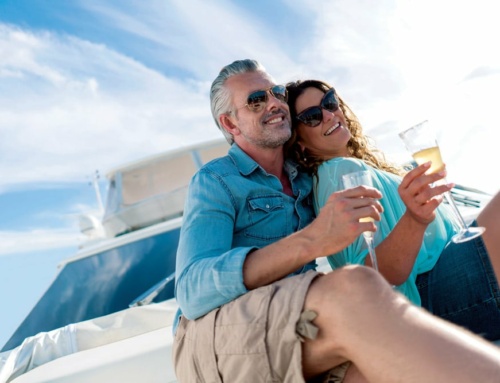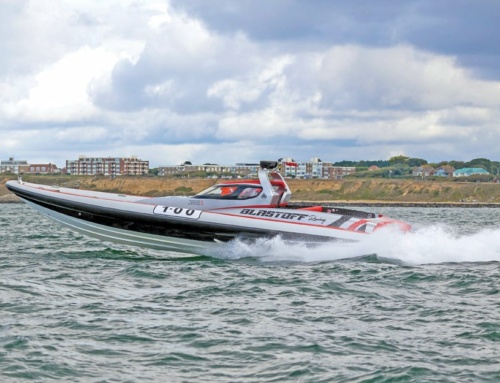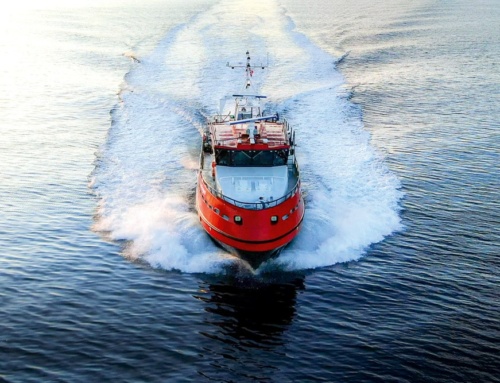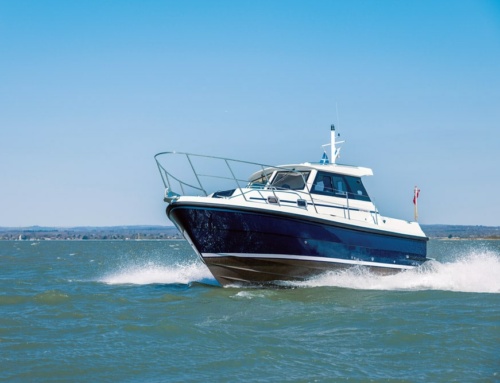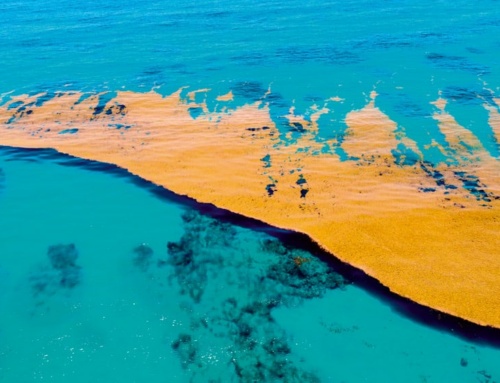- As Scott-Paine once said, his boats could take more punishment than their crews.
- Luckily, unlike many of her counterparts that were broken up after the war, HSL 102 was turned into a houseboat.
- … the restoration shopping list was considerable: a quarter of a mile of timber to effect repairs and 25 sheets of multilayered plywood for the decking.
‘The Sea Shall Not Have Them’
As the RAF reaches the ripe-old age of 100, Mike Taylor recalls the history of one of their famous High Speed Launches – HSL 102 …
This year we celebrate the centenary of the RAF, which was formed on 1st April 1918. Just 11 days later, the Marine Craft Section was inaugurated and inherited various boats from the Royal Naval Air Service and Royal Flying Corps, most of the smaller craft being used for ferrying supplies and tending to aircraft at flying boat stations. They were largely too slow and ill equipped for rescue duties, while the crews lacked training in navigation and tending to wounded airmen. Over time, these elderly craft began to wear out and new, faster boats were needed.
As the hostilities of WWII unfolded, aircraft were required to cross the Channel and the North Sea to carry out operations, with the Marine Craft Section proving to be woefully ill prepared when called upon in emergencies mid-Channel. Unquestionably it was the Battle of Britain, with the loss of over 200 pilots, that convinced the RAF of the need for a cohesive organisation capable of rescuing pilots so they could become airborne and effective again in the shortest possible time.
In February 1941, the Air Sea Rescue (ASR) Service Directorate was formed, whose job it was to marshal the principal rescue aircraft and high-speed launches into an effective service. During the early days of hostilities, a degree of chivalry existed between German and British rescue teams. This ended abruptly in August 1941, when two launches were attacked and sunk. Accordingly, their .303 guns were replaced by heavier-calibre weapons, although these were still located behind the bridge line as ‘defensive’ munitions, the crews under strict orders to fire only in self-defence.
From then on, boats and equipment improved dramatically, thereby increasing the likelihood of downed crews being saved. As the US entered the war in Europe, they too called upon the ASR service, while operations were also established in other theatres of war around the world. Overall, High Speed Launch (HSL) crews saved over 13,269 lives (info ASR/MCS Club), thereby validating their pledge ‘The Sea Shall Not Have Them’.
The story of HSL 102 could be said to have started in 1927 when businessman Hubert Scott-Paine founded the British Power Boat Company (BPB Co.) on Southampton Water, where he designed and raced Panther I and II and the revolutionary record-breaking speedboat Miss Britain III. Of metal sandwich construction and powered by an aero engine, she was designed by marine architect Fred Cooper and featured a shallow ‘vee’ hull form for ‘planing’ over the water rather than driving through it. She achieved over 100mph, a record that stood for over 50 years.
The BPB Co. quickly became established as a market leader in making and marketing fast leisure craft (such as the elegant 47.5ft Express Cruiser, capable of 24mph as tested by MB&Y magazine in 1938), aided by innovative world-class mass production techniques. Meanwhile, Scott-Paine’s ideas for a high-speed RAF seaplane tender were encouraged by T. E. Lawrence (of Arabia fame) who, as Aircraftsman Shaw, was posted to RAF Mountbatten, where he helped to develop the new 37.5ft craft. Again, Cooper lent his talents to the hull form, and by 1931 the prototype of the 200 Class tender was undertaking trials.
Sadly, in 1935, Lawrence, aged just 46, was killed in a motor cycle accident. However, the BPB Co. would continue to use Cooper’s shallow-vee hull shapes for their high-speed craft. Critical to this work was the construction of an all-new high-speed launch specifically designed for long-distance rescue of RAF aircrew at sea. Based on the seaplane hull but stretched to 64ft, forward there were facilities below decks to accommodate sick and injured airmen as well as limited catering facilities. Amidships there was a spacious wheelhouse, while aft there was a small bunk room capable of accommodating four crew. Powered by triple 12-cylinder Napier Sea Lion engines, each delivering 500hp, under test the boat achieved a laudable 40 knots. The only shortfall was the restricted visibility from the enclosed wheelhouse, which made it difficult to spot downed airmen. However, this was augmented by hatches fore and aft that could accommodate crewmembers on lookout. Ever the showman, in June 1936, Scott-Paine ran the prototype from Grimsby to Hythe, covering the 373-mile passage in 10 hours and 29 minutes. HSL 102 formed an initial order of three from the RAF Procurement Directorate that year. Initially unarmed, with the outbreak of hostilities her crew scrounged munitions for protection.
With the highly skilled marine architect George Selman now a crucial member of the team at Hythe (he joined in 1936), the BPB Co. went on to design and build more HSLs, including the charismatic Type 2 ‘Whaleback’ (so-called because of her reverse sheer cabin and the fact that she was the first ‘armed’ HSL) and the taller, more statuesque ‘Hants and Dorset’ Type 3 craft with their upswept faired chine line and greater accommodation above deck enabling crews to stay at sea for long periods.
In service, HSL 102 led an active career based at Blyth in Northumberland (where she was visited by King George VI and Queen Elizabeth), Calshot and Folkestone. Sadly, she was damaged during the Battle of Britain and was then used for target towing before being decommissioned in 1943. Luckily, unlike many of her counterparts that were broken up after the war, HSL 102 was turned into a houseboat.
The men who eventually found and restored HSL 102 were Phil Clabburn helped by his father Robin. ‘I was born in Norfolk in 1936 and as a youngster I lived at Wells-next-the-Sea where my mother ran a hotel, which was used as a billet by crewmembers of the local ASR service,’ explains Robin. ‘During 1940–41 I was given rides on their craft and got to hear fascinating stories about Scott-Paine and the BPB Co. Later, my stepfather served in the ASR service and was involved in a dramatic rescue off the Dutch coast. Post war we lived on a WWI 80ft submarine chaser in Essex.’
Then followed a life bound up with building boats, with Robin constructing racing dinghies using fibreglass, restoring a boat with his mother and owning a 44ft London–Monte Carlo Tremlett race boat, all undertaken as a hobby. ‘Much later my middle son Phillip was on holiday in Cornwall when he found an interesting-looking boat under a tarpaulin. It was an early BPB Co. 200 Class seaplane tender. I should have said “forget it”. Instead, we rebuilt it outside my house. It turned out to be number 206, making her one of the first of her class. Eventually she was trailered to Hythe, where she was launched.’
History then repeated itself. In 1992, Phillip found HSL 102 rotting in Mill Creek on the River Dart. After negotiating an agreement with the National Grid to use their facilities at Fawley, in June 1994, 102 was towed to Plymouth, lifted out and trailered to Hampshire, where she would stay for the next three years undergoing a comprehensive restoration.
At the outset, 4 tons of grit were used under high pressure to remove old paintwork and reveal the true extent of the decay: butchered bulkheads, rotten frames, missing ribs and planks, and non-existent services and controls. One of the crucial repairs was the reconstruction of the almost non-existent stem post, frames and planking on the starboard quarter, a job undertaken painstakingly by Robin himself. A positive air bubble cocoon was erected over the hull to maintain the correct moisture level.
Meanwhile, the restoration shopping list was considerable: a quarter of a mile of timber to effect repairs and 25 sheets of multilayered plywood for the decking. In July 1995 she was turned over so work could continue on the hull.
As originally built, she was single-planked forward with double diagonal planking aft. Using original BPB Co. drawings, dowels were used to secure the new timbers and then she was covered in glass cloth and 150 gallons of epoxy resin, a treatment that would see her well into the future. Seven weeks later, HSL 102 was turned back onto her keel for the work to continue.
The specialist work of assembling the wooden wheelhouse (a job that would take six months and involve up to six paid professionals) and other components was again done working to BPB Co. drawings. To reinstate the hull’s essential torsional rigidity, the original timber girders that ran fore and aft were removed, repaired and reinstated using brass fittings.
With a date agreed with HM Queen Elizabeth the Queen Mother for July 1996 to carry out the relaunch ceremony, the pressure was on, as the wiring and a myriad of other components that would transform HSL 102 into a fully operational craft all needed to be completed.
A day that will be recalled by everyone was when the reconditioned Cummins engines arrived and were craned into the hull and connected up to the ZF IRM 301 gearboxes, the conventional rearward-facing wing engines and the forward-facing centre unit driving through an ex-Whaleback vee gearbox rebuilt by Warsash Academy.
Finally, HSL 102 was manoeuvred into the water, and under far-from-ideal force 8 conditions she was tested, ready for her official launch at Calshot. All went without a hitch and she was officially commemorated.
For our trip to sea to celebrate the RAF’s centenary we were accompanied by Robin Clabburn himself and Patrick Kempe, whose in-depth video kept pace with the restoration programme as it progressed. This was the first time they had been reunited with HSL 102 since she was bought by the Portsmouth Naval Base Property Trust in 2009, who now operate and maintain her.
Nudging gently out of her berth and into Portsmouth Harbour, HSL 102 made light work of the manoeuvre while keeping a watch for fast ferries and military craft. Then, free of speed restrictions, coxswain Diggory Rose gently pushed the triple brass throttle controls to their end stops. Very soon, at a smidge under 30 knots off Solent Forts, HSL 102 was on the plane, exuding an overwhelming feeling of rugged seaworthy strength, shrugging off the slight sea state with nonchalance. As Scott-Paine once said, his boats could take more punishment than their crews. Without the help of modern-day stress calculation software, at high speed it was difficult to comprehend how the BPB Co.’s design for the 102’s hull structure was able to withstand gale force winds with the weight and torque of those mighty triple Napiers straining on their beds. As we turned about, Robin shouted in my ear: ‘I paid for everything myself, including the reconditioned Cummins engines. Had we gone for Lottery funding they would undoubtedly have insisted on us replicating the planking as it was originally. Undoubtedly, that would have meant she wouldn’t have lasted as she has.’
With her RAF pennants blowing briskly in the wind, a crew from the local Royal Navy Security Protection fleet gave us a friendly wave in recognition – not a bad salutation for a boat just 82 years young.
HSL 102, along with other craft in the coastal forces fleet, can be chartered by contacting the Portsmouth Naval Base Property Trust on bookings@pnbpt.co.uk
For more information go to www.pnbproperytrust.org.

